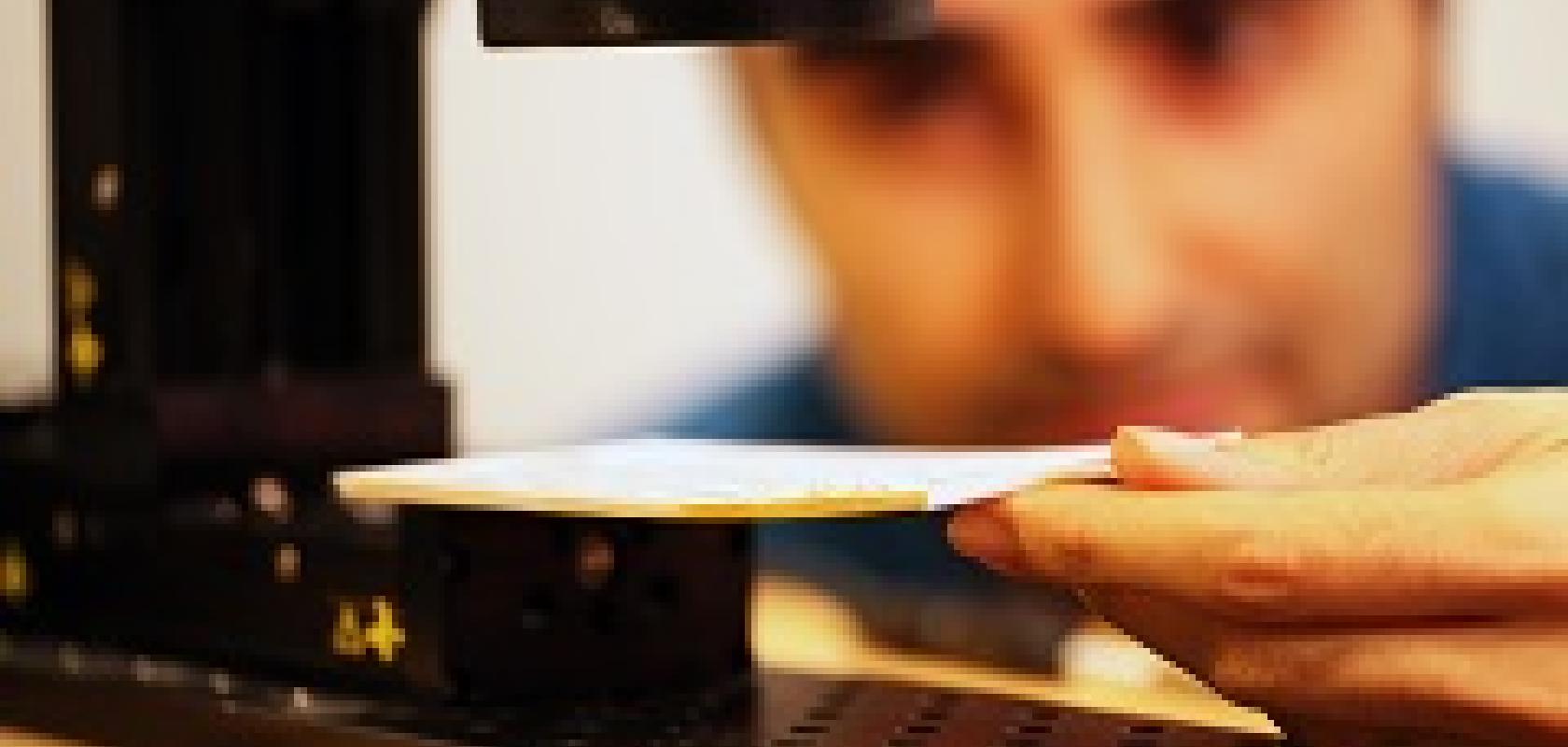Researchers at MIT are currently designing an imaging system that is able to read closed books. The work using a terahertz camera was described in the journal Nature Communications in September.
In the publication, the researchers describe a prototype system which was tested on a stack of papers, each with one letter printed on it. The system was able to correctly identify the letters on the top nine sheets.
The MIT researchers developed algorithms that acquire images from the individual sheets of paper in the stack, while fellow researchers at the Georgia Institute of Technology developed an algorithm that interprets the often distorted or incomplete images as individual letters.
‘It’s actually kind of scary,’ said Barmak Heshmat, a corresponding author on the new paper. ‘A lot of websites have these letter certifications to make sure you’re not a robot, and this algorithm can get through a lot of them.’
The system exploits the fact that trapped between the pages of a book are tiny pockets of air approximately 20µm deep. The difference in refractive index between the air and the paper means that the boundary between the two will reflect terahertz radiation back to a detector.
In the researchers’ setup, a standard terahertz camera emits ultrashort bursts of radiation, and the camera’s built-in sensor detects the signals reflected from the pockets of air. From the reflections’ time of arrival, the MIT researchers’ algorithm can gauge the distance to the individual pages of the book.
The system then relies on two different measures of the reflections’ energy and assumptions about both energy profiles to extract information about the chemical properties of the reflecting surfaces, allowing any ink on the paper to be identified.
Terahertz radiation has been widely researched for use in security screening, because different chemicals absorb different frequencies of terahertz radiation to different degrees, yielding a distinctive frequency signature for each. By the same token, terahertz frequency profiles can distinguish between ink and blank paper, in a way that other penetrative radiation, such as x-rays, can’t.
‘The Metropolitan Museum in New York showed a lot of interest in this, because they want to, for example, look into some antique books that they don’t even want to touch,’ said Heshmat. Continuing, he added that the system could be used to analyse any materials organised in thin layers, such as coatings on machine parts or pharmaceuticals.
At the moment, the algorithm can deduce the distance from the camera to the top 20 pages in a stack, but past a depth of nine pages, the energy of the reflected signal is so low that the differences between frequency signatures are swamped by noise.
‘So much work has gone into terahertz technology to get the sources and detectors working, with big promises for imaging new and exciting things,’ said Laura Waller, an associate professor of electrical engineering and computer science at the University of California at Berkeley. ‘This work is one of the first to use these new tools along with advances in computational imaging to get at pictures of things we could never see with optical technologies. Now we can judge a book through its cover!’
Further Information:


